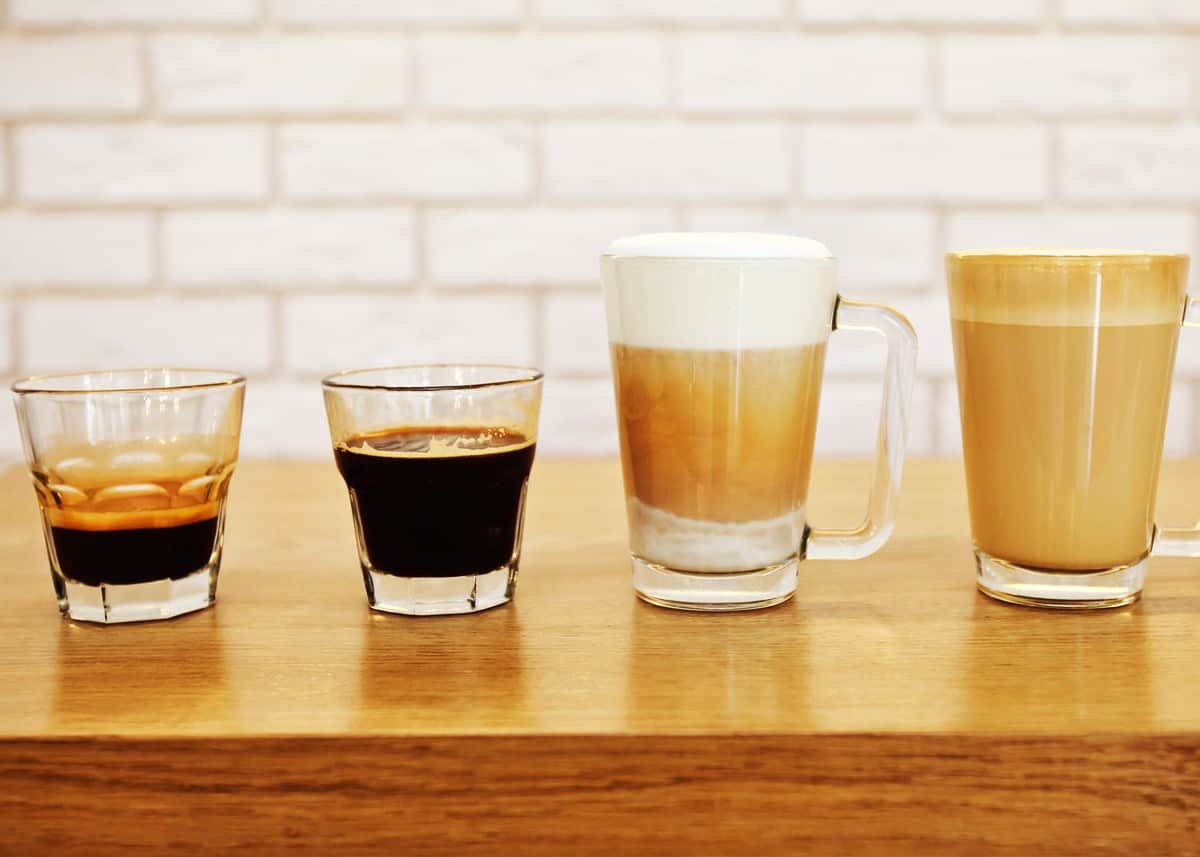Today, we will discuss classic coffee drinks, how to prepare them, common mistakes when developing technological cards, the relationship between volumes, and whether we are preparing drinks in ceramic mugs or paper cups.
Americano: A Controversial Drink
Americano is the most controversial drink that exists, and there are many debates surrounding it. The modern cafe industry does not adhere to a specific format for its preparation. In general, Americano is a drink that emerged as an alternative to the filtered brewing method when Americans travelled to Europe.
Americans, accustomed to filtered coffee, ordered coffee in Europe and received a small cup of espresso or Turkish coffee. This was a very strong, saturated drink for them, so they asked for it to be diluted with some water. This led to the creation of two variations of the drink.
Americano Preparation Methods
The first method involves diluting espresso with water. The second method is when more water is poured through the holder than is needed for espresso, filling a full cup. In my opinion, the best way to prepare Americano is to dilute espresso with water.
Visual Presentation of Americano
Americano also has a visual quality. Many people expect to see crema on the surface of Americano. However, in Americano, the crema serves only a decorative function, as it no longer has any taste.
Milk Drinks
The main classic drinks we know are cappuccino, latte, and the increasingly popular flat white. It is important to understand the ratio of coffee to milk. If we talk about macchiato, it is probably the most coffee-like drink because the espresso crema is very noticeable.
Developing Technological Cards and Mistakes
Volumes and Ingredient Ratios
When developing technological cards for coffee drinks, it is important to consider the relationship between volumes and ingredients. Misunderstandings and contradictions often arise related to portion sizes and their taste characteristics.
Americano: Different Preparation Methods
Americano can be prepared in two ways: diluting espresso with water or pouring more water through the coffee tablet (full pour). The second option can lead to over-extraction and a change in the taste of the drink.
Milk Drinks: Cappuccino, Latte, Flat White, Macchiato
It is important to maintain the correct ratio of coffee to milk for different milk drinks:
- Macchiato: 1 part espresso, 2 parts milk
- Cappuccino: 1 part espresso, 4 parts milk
- Flat White: 1 part espresso, 3 parts milk
- Latte: 1 part espresso, 6-7 parts milk
Portion Sizes and Impact on Taste
When developing a menu and choosing dishes for coffee drinks, it is important to consider that portion sizes affect the taste of the drink. For example, a large cappuccino made with two servings of espresso and a large amount of milk may have a different taste than a small cappuccino.
Three Volumes: Small, Medium, Large
When using three volumes for coffee drinks (small, medium, and large), it is important to maintain the logic of ingredient ratios. Otherwise, drinks may have different taste characteristics, which can lead to guest dissatisfaction.
Life Hacks and Recommendations
Crema in Americano
To preserve the crema on the surface of Americano, you can lift the cup so that the coffee machine’s spouts are almost touching the surface of the water. This way, the crema will be laid directly on the surface of the water.
Serving Drinks in Ceramic and Paper Cups
When developing technological cards for drinks served in ceramic and paper cups, it is important to maintain the logic of ingredient ratios so that guests receive the same taste of the drink in the establishment and to-go.
Choosing a Coffee Blend
Coffee establishments can be divided into two camps: those that cater to the needs of Americano lovers (working with robusta, ravana, blends) and those that focus on modern approaches and work with 100% Arabica. The choice of coffee blend affects the taste of drinks and guest preferences.
Choice of Coffee Blend
Coffee establishments can be divided into two camps: those that cater to the needs of Americano lovers (working with robusta, ravana, blends) and those that focus on modern approaches and work with 100% arabica. The choice of coffee blend affects the taste of drinks and the preferences of guests.
100% Arabica
100% Arabica has less caffeine and more pronounced acidity. This makes it suitable for modern coffee drinks such as flat white and latte.
Robusta, Ravana, and Blends
Robusta, ravana, and coffee blends usually have a higher caffeine content and less acidity. These blends are suitable for traditional coffee drinks such as Americano and Turkish coffee.
The Influence of Coffee Blends on Crema
The crema on the surface of coffee drinks also depends on the chosen coffee blend. 100% Arabica usually has a less dense and elastic crema than blends with robusta and ravana.
Choosing a Coffee Blend for an Coffee shop
When choosing a coffee blend for your coffee shop, it’s important to consider the preferences of your guests and keep up with modern trends. Some establishments prefer to work with 100% Arabica, others with robusta, ravana, and blends.
Conclusion
It’s important not only to know how to make coffee but also to understand the tastes and preferences of your guests. After all, each person is unique and has their own vision of what the perfect coffee drink should look and taste like. Choosing the right coffee blend and developing technological maps taking into account volumes and ingredient ratios will help you meet the needs of your guests and create a successful coffee establishment.



Leave a Reply